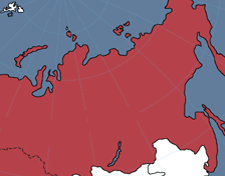Last night the presidium of the Krasno-Presenskii district soviet heard a report from the commission for improving work and living conditions.
After organizing the community of workers into brigades, the commission carried out several investigations. Enterprises which had shifted to a seven hour working day were inspected. In several of these enterprises, the investigation resulted in improvements in the services provided to pre-school children: in the “Trekhgorka” factory the nursery school was expanded, in the “Svoboda” factory and in a crystal making plant night-time classes were opened so that mothers could leave their children during their time at work, in the “Nogina” factory the nursery school changed to operate in three-shifts, in the “Proletarskii trud” factory an evening class was also established, and so on. But despite great attention devoted to the needs of pre-schoolers, the enterprises could not fully achieve the planned measures. Instead of 23,000 pre-schoolers, organized educational facilities enrolled 16,000.
“Our commission devoted a great deal of attention to prostitution,” according to speaker comrade Konova. “The struggle against prostitution received this consideration because 70 former prostitutes who had gone through a preventive clinic received jobs in production. Others requiring medical assistance remain at the preventive clinic. We have a marked reduction in the number of prostitutes.” Comrade Konova then discussed the organization of a living commune made up Komsomol members. At the insistence of the RUNI commissions, 30% of living spaces in new buildings have been designated for Komsomols living in communes.
Following the speech by comrade Konova, additional remarks evaluating the work of the district commissions were made by comrade Ignat’eva, who spoke for the regional commission on work and daily life: “The work of the Krasno-Presenskii district commission had indisputable advantages, including the widespread investigation of the administration of bath-houses, the public provision of meals, and independent establishments. I consider that the work of the commission will lead to great results when the district soviet starts to provide better leadership of its work. What kind of tasks now stand before the commission? First of all, there needs to be broad dissemination of women’s work in production. A list of professions and jobs accessible to women should be compiled. Men then need to be liberated from these jobs and transferred to jobs that are physically more difficult, while women are sent to take their places.”
The district soviet confirmed that the Krasno-Presenskaia commission for improving work and daily life had conducted its work in a proper way.
The district soviet resolved “to use brigades of workers to study the conditions of women’s work and the possibility of their broader employment in industry; to assume control for allocating funds set aside for improving the daily life of workers; to oversee the activities of organizations working with children; to carry out in the district a conference on questions of everyday life; and finally to wage the struggle against prostitution not only along preventive lines, but also by struggling against the consumers of prostitution.”


